The pathogens
In Britain the disease is caused by the fungus Dothistroma septosporum, (also known as Mycosphaerella pini or Scirrhia pini), and is a listed quarantine organism. A closely related species, Dothistroma pini, is responsible for red band needle blight in North-Central America, Russia, Ukraine, France and Hungary.
The hosts
A number of coniferous hosts are affected, but pine is particularly susceptible with 86 pine species reported to be prone to the disease worldwide. Other conifers reported as susceptible are five spruce species, including Sitka spruce (Picea sitchensis) and Norway spruce (Picea abies), European larch (Larix decidua) and Douglas fir (Pseudotsuga menziesii). However, they are all thought to be of low susceptibility, only becoming infected under high inoculum pressure.
In Britain it is Corsican pine and Lodgepole pine which are the hardest hit, although recently there has been an increasing number of reports on scots pine. It has also been reported on a further 12 pine species in Britain.
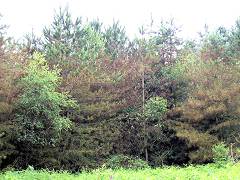
Crown infection of Corsican pine caused by Dothistroma needle blight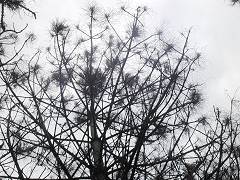
Severely defoliated crown of Corsican pine infected with Dothistroma needle blight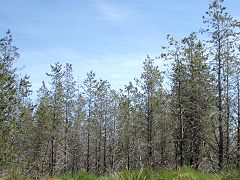
Crown defoliation of lodgepole pine infected with Dothistroma needle blight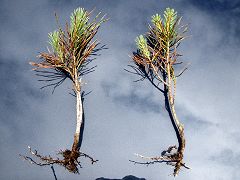
Crown infection of Scots pine seedlings by Dothistroma needle blight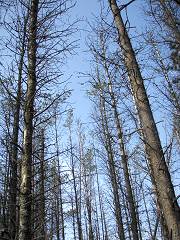
Mortality of mature lodgepole pine severely infected with Dothistroma needle blight in Scotland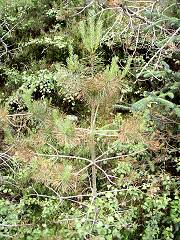
Crown infection of young Scots pine by Dothistroma needle blight
